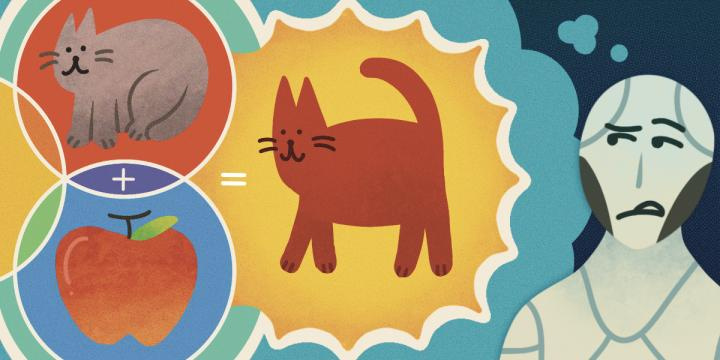Enabling the 'imagination' of artificial intelligence

Imagine an orange cat. Now, imagine the same cat, but with coal-black fur. Now, imagine the cat strutting along the Great Wall of China. Doing this, a quick series of neuron activations in your brain will come up with variations of the picture presented, based on your previous knowledge of the world.
In other words, as humans, it's easy to envision an object with different attributes. But, despite advances in deep neural networks that match or surpass human performance in certain tasks, computers still struggle with the very human skill of "imagination."
Now, a USC research team has developed an AI that uses human-like capabilities to imagine a never-before-seen object with different attributes. The paper, titled Zero-Shot Synthesis with Group-Supervised Learning, was published in the 2021 International Conference on Learning Representations on May 7.
"We were inspired by human visual generalization capabilities to try to simulate human imagination in machines," said the study's lead author Yunhao Ge, a computer science PhD student working under the supervision of Laurent Itti, a computer science professor.
"Humans can separate their learned knowledge by attributes--for instance, shape, pose, position, color--and then recombine them to imagine a new object. Our paper attempts to simulate this process using neural networks."
AI's generalization problem
For instance, say you want to create an AI system that generates images of cars. Ideally, you would provide the algorithm with a few images of a car, and it would be able to generate many types of cars--from Porsches to Pontiacs to pick-up trucks--in any color, from multiple angles.
This is one of the long-sought goals of AI: creating models that can extrapolate. This means that, given a few examples, the model should be able to extract the underlying rules and apply them to a vast range of novel examples it hasn't seen before. But machines are most commonly trained on sample features, pixels for instance, without taking into account the object's attributes.
https://www.eurekalert.org/pub_releases/2021-07/uosc-et071621.php


Your Comment :